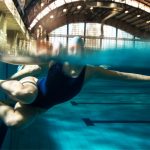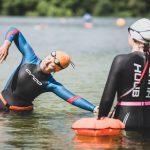
Do you need rest days from swimming training?
We answer a reader’s question about rest and recovery in a swimming training programme
Q: Practice makes perfect but is there a point where you have to take a break from training? As a runner, I incorporated a weekly rest day as part of my training plan. How would this fit within a swimming plan?
Outdoor Swimmer answers:
As anyone who has ever been a runner will tell you, running takes a toll on your body. It’s important to schedule time for rest and recovery in an effective running training programme. But does the same principle apply in swimming, which is kinder on your body?
As well as swimming, I also run to train for swimrun events. While I find swimming training easier and can do a larger volume of it than running, it’s clear you can overtrain in the water just as you can on the trails.
Unlike running, where the physical impact on your lower limbs and joints is more pronounced, swimming distributes your efforts throughout your body. However, this doesn’t make swimming easier. Swimming – like running – challenges your cardiovascular system and swimmers are prone to shoulder injuries. This all suggests you should balance your swimming training with rest periods.
But the considerations don’t end there.
In swimming, speed isn’t solely determined by aerobic fitness; it’s a combination of fitness, great technique, and muscle strength. Achieving a faster swim requires not just general fitness but also a focus on refining your stroke and using your strength effectively.
Perfecting swimming technique is a deliberate process. Terry Laughlin, the creator of Total Immersion, preferred the term ‘practice’ to ‘training’ to underscore the importance of skill-building over fitness. Much like learning a musical instrument, swimming demands honing physical skills through practice. But mere repetition won’t suffice, especially for adult learners. You need to swim mindfully. Practising with tired muscles or a fatigued mind hampers your ability to develop and embed good technique habits, which is another reason to ensure you factor in sufficient time for rest and recovery in your programme.
Our suggestions are therefore as follows:
- Take at least one rest day per week
- Do some of your sessions at a low intensity and focus on improving your swimming technique
- Listen to your body – if you feel lethargic or slow*, take an extra rest day.
- If in doubt, take more rest than you think you need rather than less
*One indicator of fatigue that I use is to test my ability and willingness to change speed. If I’m tired, I plod along. When I’m fresh, I want to race.








